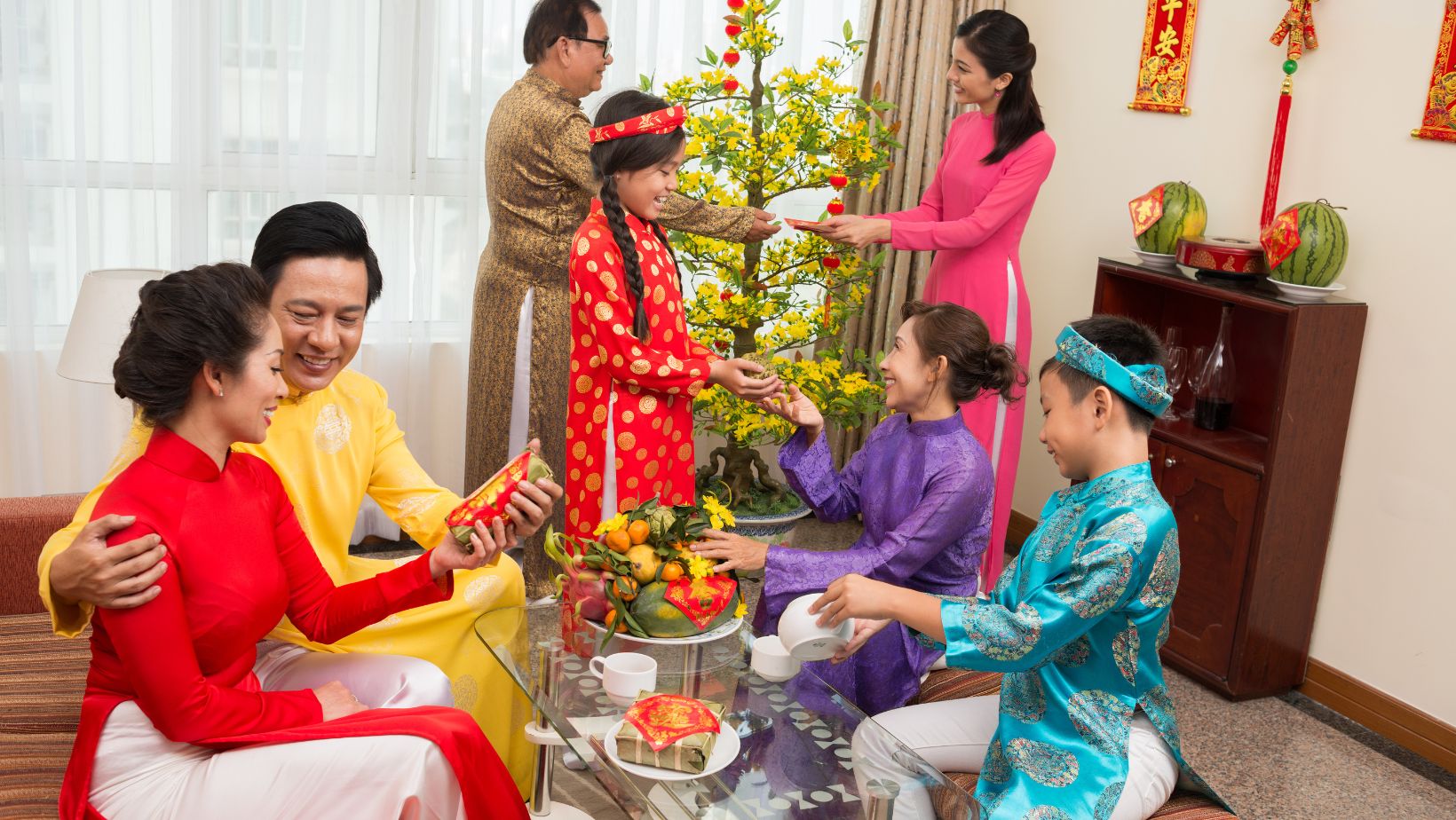Last Updated on December 27, 2023 by pm_author_91ksj
Tết Nguyên Đán
Ever wondered what it’s like to celebrate New Year’s three times in a year? Well, in Vietnam, it’s a tradition. They call it “Tết Nguyên Đán”, or simply “Tết”. It’s the most significant holiday in Vietnamese culture, marking the arrival of spring based on the Lunar calendar.
Tết is all about family reunions, feasts, and age-old customs. It’s a time when cities turn into ghost towns, as everyone heads to their hometowns to be with their families. The holiday is steeped in traditions that date back thousands of years, and it’s a fascinating blend of the old and the new.
Significance of Tet Nguyen Dan
Cultural Importance
As we’ve noted, Tet reflects the Vietnamese ethos, a fine blend of ancient customs and contemporary practices. It’s during Tet that one can witness the richness of Vietnamese traditions in full bloom. Streets are adorned with beautifully handcrafted lanterns, vibrant flowers and crisp, new yellow apricot blossoms symbolize the hope of prosperity in the incoming year.
The days leading up to Tet are abuzz with activities that are steeped in traditions passed down through generations. The act of cleaning the house, for instance, signifies bidding farewell to the old Kitchen Gods and welcoming the new ones, a practice believed to bring good fortune.
But what is Tet without its traditional food? Put simply, it’s incomplete. The Vietnamese cuisine during Tet is a banquet of colorfully decorated dishes like Ban cung, a sticky rice cake filled with bean and pork, and Mut Tet, dried fruits that are often served as a snack during the New Year.
Family Reunion and Ancestral Worship
Tet is a time of several heartwarming family reunions, not just amongst the living, but also extending to departed ancestors. In Vietnamese culture, paying homage to ancestors is an essential part of any significant event, and Tet is no exception. Families gather together to visit ancestral graves, clean the surroundings, and make offerings in a grand testament of their respect and connection with their ancestors.
These rituals provide an opportunity for people to express their gratitude for their ancestors who they believe are still with them, watching over and protecting them. This underscores the Vietnamese belief in the harmony between the living and the spiritual world.
This aspect of Tet, the familial and ancestral bonds that it personifies, is deeply cherished by Vietnamese people. It stands as a beautiful reminder of the strong values of respect, gratitude, and close-knit families that are the very foundations of Vietnamese society.

Preparations for Tet Nguyen Dan
Cleaning and Decoration
The belief that cleaning the house or workplace before Tết marks the sending-off of the Kitchen Gods to Heaven is widely held among Vietnamese families. It’s thought that these Domestic Deities ascend to report on the family’s activities throughout the year. But the cleanup is more than just a spiritual ritual – it’s also about bidding farewell to old, dusty energies and welcoming bright, new ones.
Decoration is another crucial part of Tết preparation. Red and gold are the go-to colors, symbolizing wealth and good luck for the coming year. And let’s not forget how the streets and homes gleam with the light from red lanterns, while the scent of blooming flowers carries well-wishes for a prosperous year.
Shopping and Food Preparation
Shopping, particularly for food, is taken seriously during Tết preparation. The menu is carefully planned, often including traditional dishes like sticky rice cakes (Bánh Chưng) and dried fruits. Markets during this time are flooded with a myriad of fruits, snacks, and other delicacies, all aiming for a spot on the Tết table.
Food preparation, on the other hand, involves meticulous planning and labor-intensive work. The preparation process could take days to complete, but it is worth it. Families bond over the cooking process, handing down recipes and techniques through generations.
Traditional Customs and Rituals
In addition to cleaning and food preparation, traditional customs play an integral part in the run-up to Tết. Ancestral worship, for example, involves families visiting ancestral graves and making offerings to show respect and gratitude.
Charitable activities are also widespread. As New Year approaches, many people take part in donating food, clothing, and money to less privileged communities, embodying the Vietnamese ethos of brotherhood and unity.
These critical preparations not only signify the importance of celebrating Tết Nguyên Đán, but they also reinforce the values and virtues underlied in Vietnamese society. It’s fascinating to see how these customs and traditions have adapted over the years and yet, the essence of respect, gratitude, and close-knit families remain untarnished.




